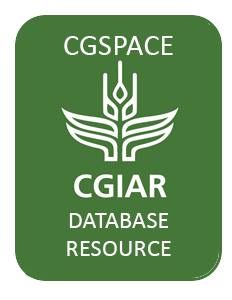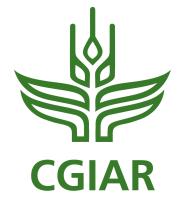Resource information
The agricultural activities contribute to the largest share of water consumption in the arid and semi-arid basins. In this study, we demonstrate the application of Water Accounting Plus (WA+) for estimation of the green water consumption (ETGreen) and blue water consumption (ETBlue) for assessing the water productivity (WP) and land productivity (LP) to identify the bright-spots and hot-spots at the district administrative unit level for effectively managing the scarce water resources and sustaining food security in a highly non-resilient semi-arid basin of India. The WA+ framework uses satellite remote sensing datasets from different sources for this purpose and we used the data from 2003 to 2020. The long-term average of ETGreen and ETBlue in the Mahi basin is found to be 15.8 km3 /year and 12.32 km3 /year, respectively. The blue water index (BWI) and green water index (GWI) in the basin vary from 0.282 to 0.598 and 0.40–0.72. We found that the BWI is highest for the districts of Gujarat, whereas, the GWI is highest for the districts of Madhya Pradesh. The long-term average of the LP and WP for both the irrigated and rainfed cereals in the basin is found as 2287.71 kg/ha & 1713.62 kg/ha and 0.721 kg/ m3 & 0.483 kg/m3 , respectively from 2003 to 2020. The WP (rainfed) of all the districts of the Gujarat is comparatively lower (varying from 0.34 kg/m3 to 0.5 kg/m3 ) than the districts of the Madhya Pradesh (varying from 0.59 kg/m3 to 0.70 kg/m3 ) and the Rajasthan (varying from 0.48 kg/m3 to 0.73 kg/m3 ). Based on the results, we found that the Ratlam district of the Madhya Pradesh has both highest LP and WP (irrigated) as 2573.96 kg/ha and 2.14 kg/m3 , respectively among all the districts of the Mahi basin, and hence it is classified as the ‘Bright spot-district’. The Anand district is found to have the lowest WP and LP as 0.44 kg/m3 and 2467.51 kg/ha, respectively and hence it is classified as the ‘hot spot-district’. For rainfed cereals, we found that the Neemuch district of Madhya Pradesh has the highest WP and LP as 0.59 kg/m3 and 1948.13 kg /ha, respectively, and the Anand district with the lowest WP as 0.34 kg/m3 and LP of 1572.21 kg/ha, respectively. Therefore, we classified the Neemach district as the ‘Bright spot-district’ and the Anand district as the hot spot- district for rainfed cereals. These findings will help develop sustainable and actionable agricultural water management plans by the policymakers and stakeholders in the basin.


